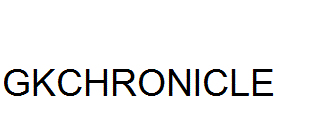Units of Measurement of Physical Quantities and their Dimensions
Physics deals with the matter and energy and also deals with their inter conversions. Physics is nothing but science of measurements. Physical
quantities are those quantities, which can be measured. Physical quantities will have magintudes as well as units of measurement so that they can express the
exact quantity of measurement.
All the physical quantities are classified into two categories, namely fundamental physical quantities and derived physical quantities. The fundamental physical
quantities cannot be expressed in terms of other physical quantities whereas derived physical quantities can be expressed in terms of fundamental quantities or
other derived quantities. The examples of fundamental quantities are length, mass and time and the examples of derived quantities are area, speed, acceleration,
etc.
Units of Measurement of Physical Quantities
- Units are the standards of measurement of physical quantities. The systems of measurement of physical quantities are FPS (Foot, Pound,
Second), MKS (Meter, Kilogram, Second) and CGS (Centimeter, Gram, Second).
- There is another system called SI (International System of Units) system in which there are 7 fundamental quantities.
Units of Measurement of Fundamental Physical Quantities
The following list shows 7 fundamental physical quantities and their units of measurement:
| Fundamental Physical Quantity |
Unit of Measurement (SI system) |
| Length |
Meter (m) |
| Mass |
Kilogram (kg) |
| Time |
Second (s) |
| Electric Current |
Ampere (A) |
| Temperature |
Kelvin (K) |
| Amount of substance |
Mole (mol) |
| Luminous Intensity |
Candela (cd) |
Units of Measurement of Derived Physical Quantities
The following list shows some important derived physical quantities and their units of measurement:
| Derived Physical Quantity |
Formula |
Unit of Measurement (SI system) |
| Area |
Length x Breadth |
m2 |
| Volume |
Length x Breadth x Height |
m3 |
| Speed |
Distance/Time |
m/s |
| Velocity |
Displacement/Time |
m/s |
| Acceleration |
Velocity/Time |
m/s2 |
| Density |
Mass/Volume |
kg/m3 |
| Momentum |
Mass x Velocity |
kg x m/s |
| Force |
Mass x Acceleration |
kg x m/s2 (or) Newton (N) |
| Pressure |
Force/Area |
N/m2 (or) Pascal (Pa) |
| Work (and) Energy |
Force x Distance |
N x m (or) Joule (J) |
| Power |
Work/Time |
J/s (or) Watt (W) |
| Impulse |
Force x Time |
N x s |
| Torque (or) Moment of Force |
Force x Distance |
N x m |
| Surface Tension |
Force/Length |
N/m |
| Moment of Inertia |
Mass x (distance)2 |
kg x m2 |
| Current Density |
Current/Area |
A/m2 |
| Electric Charge |
Current x Time |
A x s |
Dimensions of Physical Quantities
- The dimensions of fundamental physical quantities: Mass is M1, Length is L1 and Time is T1.
- The dimension of a derived physical quantity can be termed as the powers to which the fundamental units of mass, length and time are raised
to represent that derived physical quantity.
The dimensions of some of the derived physical quantities: velocity is L1 T-1, acceleration is L1 T-2, momentum
is M1 L1 T-1 and force is M1 L1 T-2.
Scalars and Vectors
- Study of objects in motion is called Mechanics. Physical quantities that depict the motion of objects are classified into two categories,
scalars and vectors. Scalars are those physical quantities that have only magnitude and vectors are those physical quantities that have both
magnitude and direction.
Examples of scalars are Mass, Speed, Distance, etc. and examples of vectors are Displacement, Velocity, Force,
etc.
- Time (t) rate of change of distance of a body is called speed. Time rate of change of displacement (s) is called velocity. Uniform motion
means uniform velocity (v). Time rate of change of velocity is called acceleration (a).
Velocity, v = ( sf – si )/( tf - ti ) ( m/s ), where 'f' represents final quantity and 'i'
represents initial quantity
Acceleration, a = ( vf – vi )/( tf – ti ) ( m/s2 )
Momentum, p = mv ( kg m/s ), where m is the mass of the body.
Force, F = ma ( kg m/s2 or N ), where N is Newton.
Quiz
- Match the fundamental physical quantities with their respective SI units:
- Luminous Intensity
- Amount of Substance
- Temperature
- Electric Current
- Kelvin
- Ampere
- Mole
- Candela
- a-1, b-2, c-4, d-3
- a-2, b-3, c-1, d-4
- a-4, b-3, c-1, d-2
- a-3, b-4, c-1, d-2
Answer
Ans: C
- What is the SI unit of Pressure?
- Newton
- Joule
- Watt
- Pascal
Answer
Ans: D



